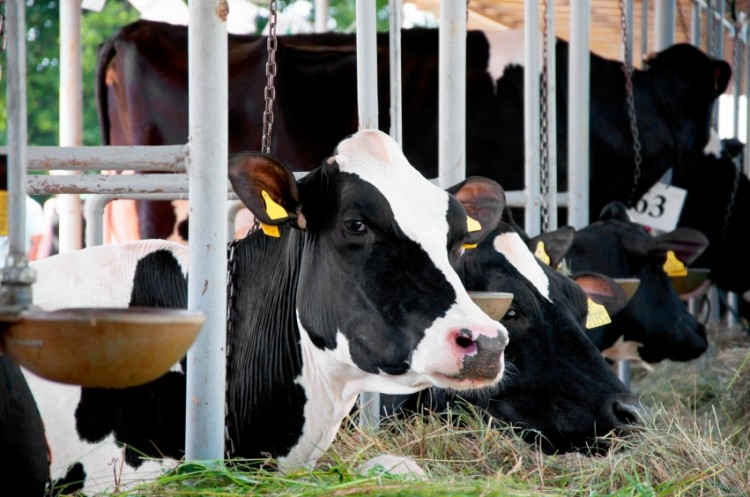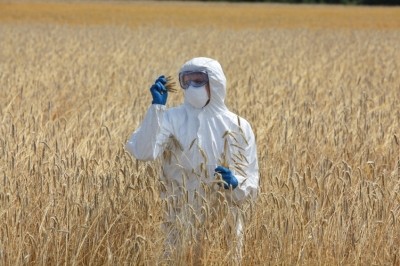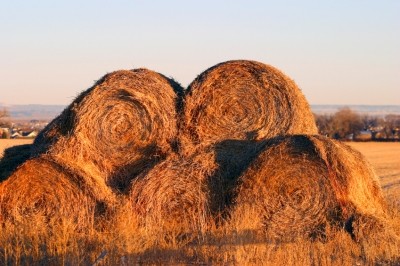Wet weather boosts mycotoxins risks for US dairy, beef producers

Alltech released details of analyses done on corn, corn silage and other feed ingredients in a webinar Thursday.
Overall, findings indicate difficulties ahead for producers working with ruminants, said Max Hawkins, nutritionist with Alltech’s mycotoxin management team after the presentation.
“The weather stressors have been a big, big influence in these results," he told us.
However, the feed ingredients are likely still usable, he said.
“For the most part all forages can be fed if producers are proactive and willing to feed less and still use control programs,” he said. “All forages have an opportunity to bring mycotoxins into the TMR [total mixed ration] but we don’t know the risk until we test."
Mycotoxin presence
The report focused predominately on tested samples of corn silage and feed corn.
In silage, the average sample had about five different types of mycotoxins present, said Hawkins.
Additionally, there may be some concerns from the combinations of mycotoxins found, he said. Only about 2.5% of samples had one type of toxin, and a few samples had as many as 10.
“If we look at this in terms of last year, corn silage for 2016, the analysis it averaged 3.6 so we’re 1.5 mycotoxins per sample more in 2017 than we were in 2016,” he said.
A large percentage of samples had Type B trichothecenes and 91.3% of samples had deoxynivalenol (DON), while about 96% of samples had fusaric acid and 68% contained fumonisin, he said. “Aflatoxin B-1 is present over 10% of the samples, which is somewhat concerning particularly with dairy cattle,” he added.
Emerging mycotoxins that the company has started watching were found in about 24% of samples, said Hawkins.
DON and Type B trichothecenes were present at about 2,500 parts per billion (ppb) while fumonisin was at about 2,000ppd and T2 at 164ppb.
“This could be quite a significant impact on dry matter intake, gut health, milk production, gains, feed efficiencies, general animal health can all be quite impacted by the levels that we see presented here in the average samples,” he added.
In corn, the per sample average for mycotoxin presence was 4.28, which was about twice what was found last year, he said.
“When we look at the mycotoxins group frequencies here again we’d expect Type B trichothecenes, fumonisins and fusaric acid to be the most prevalent and they are,” he said.
“Type B is present in over 90% of samples, fumonisin almost 57% and fusaric acid over 78%. If we look at those risk levels present we do see higher fumonisin in corn almost 2,400ppb and DON is just short of 1,000ppb.”
“The mycotoxins present, particularly fusaric acid and DON, will have synergistic effects with each other,” Hawkins told us. “This means that the effects will be magnified.”
Testing feed ingredients prior to use should help producers make better decisions about using those ingredients, he said. “This will allow them to work with formulation and manage inclusion rates,” he added.
“Then they need to monitor forage faces to minimize oxygen penetration and pitch-off spoiled forages,” he said. “Do not feed spoiled forages to dry cows and heifers.”
Weather challenges
The different mycotoxins found in the feed ingredients may have been increased by weather-related stressors that occurred during several stages of feed crop growth and harvest, said Hawkins.
“If we think back to the weather patterns and weather stresses that this year’s crop has had to grow and mature under through late maturity and up until harvest – we know certainly some areas with above normal precipitation in July and certainly in August,” he said. There also were heavy rains close to harvest in several parts of the country, he added.
“Rainfall has certainly had an effect on the corn crop this year,” he said. “As we look at the results it will be easy to identify what some of that effect may have been.”
There was a distribution of corn silage samples with low, moderate and high amounts of mycotoxin presence stretching across the US, he said. “All kinds of things can influence what the mycotoxin risk would be – in harvesting corn silage you can’t depend on what you’re neighbor has tested, you have to test for yourself,” he added.
Late season rains also may have added stress at harvest and may mean that it is increasingly important to have proper storage of forage materials, said Hawkins.
“Silage management and monitoring of silage in storage are going to be quite critical as we move into the feed out of 2017 corn silage,” he said. “Look closer to spring time and see where these levels have moved – have we been able to maintain them or have they become higher risk?”
Similarly, for the corn crop, late rains and low prices may mean that corn in storage is being maintained through aeration, rather than a more expensive process, he said. “Last year we had a lot of spoiled grain coming out of storage – which led to some DDGS and corn gluten that were some of the highest levels we’ve seen and this year could be almost the same,” he added.
“Corn storage is not going to be any different,” he said. Producers will need to be careful when it is added into diets for dairy cattle, beef cattle, heifers and calves, he added.












